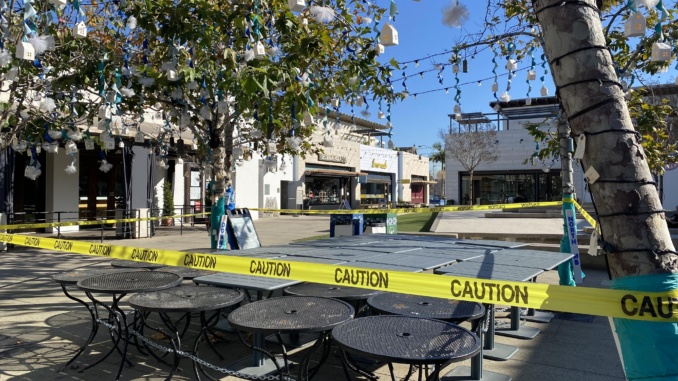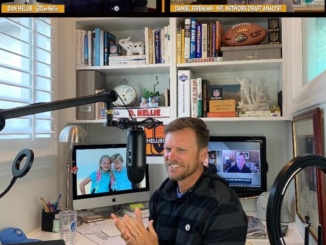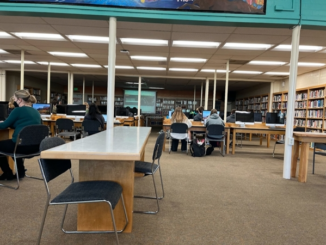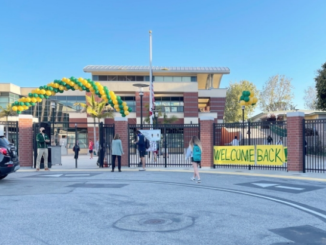
Kimi Danei, Executive Theme Editor and Raven Ramsey, Theme Editor
La Vista gathers new details on the spread of COVID-19 to keep Costa students updated on the virus and how it affects them. These details range from Governor Gavin Newsom’s regional stay-at-home order to the COVID-19 vaccine.
A regional stay-at-home order was issued on Dec. 3 by the California Department of Public Health and Governor Gavin Newsom due to the continual rise in COVID-19 cases in California. This stay-at-home order took effect on Dec. 5 for the purpose of reducing the number of COVID-19 cases and hospitalizations in California. The order forces California residents to remain home; however, this excludes entering public areas that are essential for the benefit of the country’s economy, including authorized work, errands and local shopping. Businesses that are not deemed as crucial, such as hair salons, playgrounds and museums, are required to close. In the interest of supporting businesses, restaurants are allowed to remain open only for delivery, drive-through and carry-out, according to the health order. Shopping centers and retail businesses may also remain open, but must now operate at 20% capacity. Similarly, entertainment production may continue to operate but are not permitted to have live audiences. “Truthfully, I do appreciate Governor Newsom’s stay-at-home order, as it is made for our safety,” said junior Alex Jeffords, public speaking and community engagement lead for the youth advisory council of the Beach Cities Health District. “People that continue to go outside and not social distance just contribute to the spread of disease, so Governor Newsom’s stay-at-home order is the only sure thing that will keep us 100% COVID-free.”
Manhattan Beach followed Governor Newsom’s order by issuing a press release on Dec. 7 that reiterated the state’s orders and added that the ICU staff capacity in the Southern California region has dropped to 10.6% as of Dec. 6. On Jan. 11, Los Angeles County reached a record high of COVID-19 cases with approximately 932,697 confirmed cases.
“Just as things began to open up, everything seemed to be shut down again,” said junior Sierra Sargent, Mira Costa High School representative for the youth advisory council of the Beach Cities Health District. “However, I think it is necessary to help keep our vulnerable members of the community safe so until our numbers are lower and hospitals are not overwhelmed, the stay at home order will help slow the spread.”
After California’s stay-at-home order, Manhattan Beach initiated its plan to use closed outdoor dining areas for people to sit and potentially dine at. This plan was soon retracted on Jan. 3 due to the number of cases doubling locally.
“I feel that Manhattan Beach keeping their outdoor areas open for seating to the public is going against the stay-at-home order’s intentions, as people are eating outside of the restaurants the same as before,” said junior Alexa Ressler, communications lead for the youth advisory council of the Beach Cities Health District. “However, I think that keeping outside dining open, with the proper safety precautions, is pretty safe and that there are other areas that should be monitored more within the lockdown.”
While the quarantine issued around the country, scientists worked to find a vaccine that would help prevent the spread of COVID-19. In less than a year, scientists were able to create two vaccines that proved to be 95% effective and released them to high priority citizens, which
includes doctors and elderly residents in long-term care facilities, under an emergency-use authorization order from the Food and Drug Administration. The first shot, from Pfizer-BioNtech, was authorized on Dec. 11 and given to a group of Americans on Dec. 14 in Queens, NY, whereas the second vaccine, the Moderna shot, was issued on Dec. 18. Each vaccine is given twice, three to four weeks following the initial dose.
“I think the vaccine is effective because the scientists that developed it did a lot of testing to ensure its effectiveness,” junior Amy Adkins said. “I would get the vaccine because I’m not scared of any side effects it might cause, as every vaccine and almost every medicine has some sort of side effect, so I’m not worried.”
As a result of people traveling during the holiday season, COVID-19 cases surged among the country and the Manhattan Beach Unified School District. In-person practice for Costa athletics, as well as all in-person programs K-12, was put on pause during the winter break and was said to remain so until Jan. 13 in hopes of allowing people who traveled over the break to self-quarantine to reduce the spread of COVID-19. In a message from Superintendent Dr. Mike Matthews on Jan. 14, however, Matthews announced plans to postpone the return to in-person practice for MCHS athletics until Jan. 19 and the move to hybrid learning for TK-2 schools until Feb. 1; this is due to the extreme increase in COVID-19 cases during the holidays. By contrast, the district’s preschool returned for in-person instruction on Jan. 5 due to not having any confirmed COVID-19 cases.
“Dance team is dependent on all of us being together, so it is going to be difficult not seeing each other in person until Jan. 19,” said senior Cameron Pitts, dance team member. “However, I think it is best for the safety of the team to hold out, and I understand why there is a postponement [of practices].”
It seems less likely for Costa to begin reopening as COVID-19 cases continue to rise in L.A. County and Manhattan Beach. As of Jan. 12, 33 students and staff from the MBUSD district have been confirmed positive for COVID-19, according to the MBUSD website. This is a dramatic increase from the 11 students and staff with confirmed positive cases on Dec. 15. Costa athletics, which currently has 1,290 students and staff practicing in-person, has 11 confirmed cases. Costa non-athletics, including special education classes, currently has 119 students and staff and three confirmed COVID-19 cases.
“I personally do not think [students and staff] will be going back to school this year,” Adkins said. “When it is safe to come back I would definitely go but only if there were guaranteed safety measures being followed.”
The confirmed cases of the virus have only made the fears of returning to school more prevalent. Online learning has proven difficult for many students, and while certain students and parents feel it would be a better idea to return to in-person school, there are some that will not risk sending their student back to in-person learning without the guarantee of their child’s safety. “Online has been a bit of a struggle because the style is new and hasn’t been done before and teachers still have the same expectations as if we were physically attending school,” junior Natalie Rodriguez said. “Despite this, I wouldn’t want to return to in-person learning. I know that teachers are doing the best they can to help students, and it’s not really any different than normal.”
TK-2 in-person learning will resume on Feb. 1. The district created an AA/BB hybrid model for TK-2 schools that allows teachers to be on campus four days a week and students to attend in-person learning two days a week. Two cohorts, A and B, will attend in-person learning on different days to reduce the number of students in contact with each other. On Wednesdays, campuses will be closed and students will do at-home learning. The district anticipates a shift to the AM/PM model, in which students attend in-person learning four mornings a week or four afternoons a week, in February. However, this may change, as it is heavily dependent on the success of the AA/BB model, according to an email from Matthews on Dec. 31. “Having children doing online school is difficult, so allowing schools to reopen for the TK age range is necessary,” Sargent said. “Schools need to be opened eventually, so the youngest age group is the best way to test some new methods of learning; therefore, I support this as long as mask-wearing, hybrid schedules and other precautions are enacted to ensure a safe learning environment.”




Leave a Reply